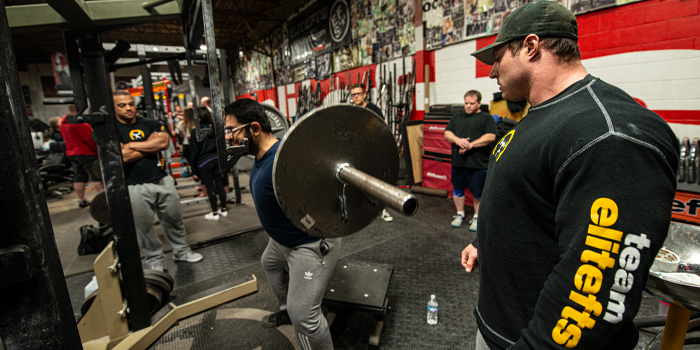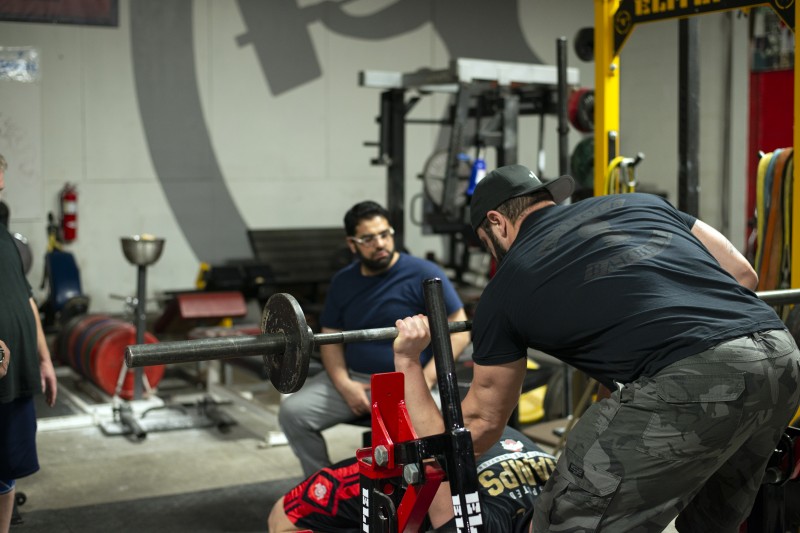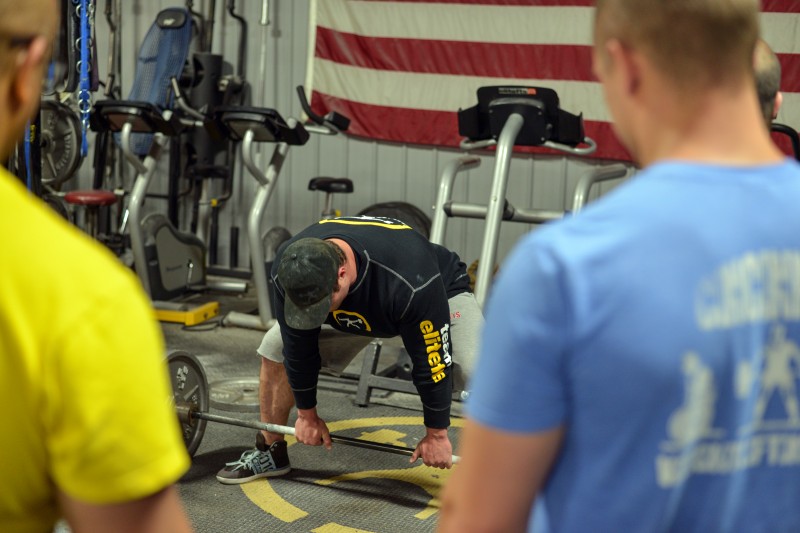
Note from the author: Remember that your mental health is multi-faceted. If you are struggling with your mental health, consult a mental health professional. If you or someone you know is facing a serious mental health crisis or are considering suicide, be sure to utilize the National Suicide Prevention Lifeline at 1-800-273-8255. The Lifeline provides free and confidential support for people in distress and prevention and crisis resources for you or your loved ones and best practices for professionals 24/7.
Conjugate training has proven to be an effective system for many lifters and athletes. Which people it works best for specifically can be debated a million different ways, but that isn’t the purpose of this article. As I’ve outlined in various previous articles, much of choosing a program depends on the lifter’s personality type, priorities, and goals.
For those that do train using a conjugate system, the three methods utilized (maximal effort, dynamic effort, and repeated effort) must be programmed appropriately in order for the lifter to be successful. One of the great things about the conjugate system is that there is room for flexibility in terms of how these methods are expressed/trained in the program.
RECENT: 3 Ways I Stopped Straining My Abductors
Across this site alone, you’ll find numerous different ways that coaches and lifters use conjugate training for themselves and their athletes. For the purposes of this article, I want to focus on one of the methods (max effort) and a particular population, specifically lifters that struggle with anxiety and/or depression.
This may seem like an odd way to classify a group of lifters, but through my own experiences, coaching others, and a survey I did a few years back with over 120 lifters who identified as struggling with mental health concerns, I found that there are modifications to programming that can benefit this population.

Before we go any further, remember that the maximal effort method is defined as lifting a maximal load (training against maximal resistance). The dynamic effort method is lifting a non-maximal load with the highest attainable speed, and the repeated effort method is lifting a non-maximal load to failure (Zatsiorsky pg 81). Many lifters also attach specific movements or other variables to these methods, but at their core, it is as simple as defined above. The other details are built into the program as ways to train or express these methods based on the needs of the lifter.
As I mentioned earlier, over the years of talking to and working with lifters struggling with various forms of anxiety and depression (as well as my own experiences as a competitor), I’ve found that many lifters find that max effort work has a direct and sizable impact on their mental health symptoms. Many lifters find that during or following max effort, their mental health symptoms worsen, and/or their sleep quality and recovery suffer dramatically compared to their fellow lifters.
In the early days of training in a conjugate system as a powerlifter (and during a time where I struggled with severe anxiety and insomnia), my anxiety would go through the roof following a max effort session, and my sleep would be impacted for days. Making modifications to my training over the years has improved my mental health and performance under the bar.
My goal in this article isn’t to pick apart all the physiological and psychological reasons why that is the case (I did cover some of that research in my elitefts article titled "Mental Health & the Strength Athlete: Why Powerlifters Get Ulcers"). For this article, I wanted to focus on specific modifications to max effort work that I believe can allow you to be successful training in a conjugate framework while lessening the impact on mental health symptoms and improving performance in the gym and on competition day.
Every lifter is going to need to evaluate their own needs when it comes to these modifications. Just because you struggle with anxiety or depression doesn’t mean you need to make these adjustments. If what you’re doing is working with no issues, then great. But if you are finding that max effort work is negatively impacting your mental health (and in turn, your performance), then any combination of these modifications may be worth considering.
Modification 1: Spread Out Max Effort Frequency
For most lifters, their training is organized in a standard calendar week, with max effort upper and lower both occurring one time (each) in that week. For many, this works great, but for lifters with comprised recovery or ability to take on additional stress, they may struggle to do max effort work once per week without overtraining.
Spreading out the frequency of max effort work is one way to accommodate this. There are a few ways to spread out frequency:
- Keep the standard week of dynamic and repeated effort work, but only perform max effort work every two or three weeks. For those that do this, sometimes additional sub-maximal repeated effort work is substituted for max effort work in the weeks between. There are different ways to program this, that I can expand upon if people have questions.
- Expand your “training week” (or micro-cycle) beyond a standard seven-day calendar week. This option has never fit with my personality or schedule personally, but I know some lifters use a 10- or 12-day training week with a lot of success. This can allow you to place more time between max effort sessions.

Modification 2: Do Your Max Effort Work in a Non-Aroused State
Many lifters associate max effort work with plenty of loud music, back slaps from their training partners, and ammonia. For some, getting hyped up for a max effort lift is optimal. For others, getting too emotionally aroused and relying on adrenaline for the max effort session causes problems both physiologically and psychologically.
Remember that max effort is moving a maximal load. That can be a maximal load in a calm state, and it’s still a maximal load. Sure, the weight on the bar may be less than if channeling all your worst nightmares into the lift, but the whole goal of max effort is straining through the maximal load, not setting an Instagram PR or exorcising your childhood demons.
This very much depends on the individual and their personality, stress response, and needs. But for many lifters, doing max effort in a calmer state can pay off both on and off the platform.
Modification 3: Pick Humbling Max Effort Movements
The temptation for many lifters is to pick max effort movements that:
- Are visually impressive;
- Put the most weight on the bar possible; and
- Are ones they’re good at.
Unfortunately, these options are oftentimes not only less beneficial in training but place additional unnecessary stress on the lifter.
Picking movements that are mechanically disadvantaged (force you to use less weight on the bar) may be less visually impressive but allows you to get more out of less and put forth a maximal effort without as much of a stress impact. It may be less fun to do a paused floor press with 365 pounds for a single versus a reverse band bench press with 455 pounds, but it may be more beneficial.
If you make a list of max effort movements that carry over to your competitive lifts, then circle what you suck at, and underline what you know uses the least weight on the bar. That can be a great place to start.
As I said, these are not cut-and-dry recommendations for every lifter, but if you’re struggling with your anxiety/depression symptoms following max effort sessions, these modifications can provide ways to see both your mental health and performance improve. How exactly you program these modifications will be unique to each lifter and likely take some trial and error, so be patient as you gain experience in seeing what works best for you.
If you have questions, go ahead and drop them in the comments below, and I’ll help however I can.
References
- Zatsiorsky VM, Kraemer WJ (2006) Science and Practice of Strength Training. Champaign, IL: Human Kinetics.











thx
There are a few different ways you could do it..
You could do submaximal (but still higher intensity) rep sets in between your max effort single weeks (so work up to a set of 5 with a rep in the tank week 1, then set of 3 with rep in the tank week 2, then your max effort single on week 3, etc) and use the the same max effort movement for all weeks. This has it's pros and cons. If doing max effort with a movement similar to your comp lifts, I would be careful not to burn out (see the recommendations I gave about selecting movements).
You could also do submaximal rep work with a different supplemental movement and completely disconnect it from your max effort weeks. So week 1 could be something like 3x8 on stiff leg deadlifts or tempo squats, week 2 could be 4x8 or 3x8 with increased weight on same movement, then week 3 could be your max effort week with your other max effort movement. That's just one example but I would use the off-weeks to do lighter/controlled movements that focus on hypertrophy/weak points and give you a break nervous system wise between max effort weeks.
I hope that's a helpful place to start.There are a lot of ways to do it.
I really appreciate you taking the time to write about this side of lifting. It is nice to see how someone who deals with this subject programs for themselves, because it is definitely helping me in my own programming.
Thanks again.
I wrote a broader series of articles called "Mental Health & the Strength Athlete" a while back if you're interested in those as well:
Part 1: https://www.elitefts.com/education/mental-health-and-the-strength-athlete-strength-beyond-the-barbell/
Part 2: https://www.elitefts.com/education/mental-health-and-the-strength-athlete-why-powerlifters-get-ulcers/
Part 3: https://www.elitefts.com/education/mental-health-and-the-strength-athlete-building-a-better-training-program/